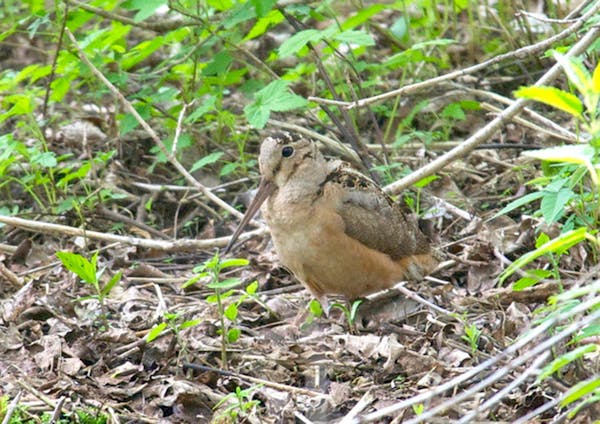 See
more of the story
See
more of the story
Four years ago, the Department of Natural Resources (DNR) contracted with an engineering firm to determine repair costs for the state's 15 fish hatcheries.
Eleven of the hatcheries are "cool water,'' meaning they produce walleyes and muskies, and four are "cold water'' that produce fish such as trout.
By widespread agreement, the hatcheries have been in tough shape for many years — "held together by baling wire and duct tape,'' as one observer describes them.
The 2019 repair estimate was $60 million, a number that might be closer to $90 million today.
The hatcheries are critical to maintaining fishing opportunities that Minnesota anglers expect and that attract tens of thousands of nonresident anglers to the state every year.
Annually, Minnesota sportfishing produces about $300 million for the state's general fund, said former DNR Commissioner Mark Holsten.
Holsten is executive director of MN-FISH Sportfishing Foundation and Coalition (mn-fish.com), a fishing and fish-management advocacy group.
In his budget this year to the Legislature, Gov. Tim Walz proposed $20 million for hatchery refurbishment, $10 million from bonding and $10 million from the general fund.
But that proposal, and others in the House and Senate that would provide $60 million for hatcheries, are in limbo.
In the DFL-controlled House, $247 million is the current price tag of a broad-based "outdoors'' bill that includes $10 million from the general fund for hatcheries. The Senate, meanwhile, led by Republicans, in its companion bill is proposing to spend only $1 million, in total, and not for the environment but for sports promotion.
DNR fisheries chief Brad Parsons said this week that Game and Fish Fund money is being used to make hatchery repairs that can't wait. The Game and Fish Fund is primarily supported by sales of hunting and fishing licenses.
"The use of this money is appropriate, but if we had bonding or General Fund money to repair these facilities, we could put the Game and Fish Fund money to use in different ways,'' Parsons said. "Even the $20 million in the governor's budget would only be for fixing up what we have. It wouldn't be for anything new.''
Holsten said that past DNR funding requests for hatchery maintenance have largely been ignored by the Legislature in part because, until the founding of MN-FISH, no fishing-specific advocacy group existed to support the proposals.
"The DNR has requested money for the hatcheries for many years, but the Legislature essentially has kicked the can down the road and not dealt with the problem,'' Holsten said.
Rep. Kaohly Vang Her, DFL-St. Paul, is carrying a MN-Fish supported bill that would provide $60 million for hatchery maintenance, and Sen. Bill Ingebrigtsen, R-Alexandria, has a similar bill in the Senate. But given the budget impasses that divide the House and Senate, the bills' fates are uncertain.
I reported last week that as of April 1, Americans traveling to Canada no longer need to present a negative COVID-19 test result to cross the border.
Last week as well I contacted the Canadian federal government to find out whether other restrictions affecting American tourists, especially anglers and canoe paddlers, would also be lifted.
Among these is the Canadian suspension since the pandemic of Remote Area Border Crossing (RABC) permits. Some Boundary Waters Canoe Area Wilderness paddlers have used the permits to cross into adjacent Quetico Provincial Park without passing through a formal Canada Border Services Agency (CBSA) entry point, such as the one at International Falls, Minn./Fort Frances, Ontario.
I finally received an answer. Here's what CBSA senior spokesperson Rebecca Purdy said:
"The Remote Area Border Crossing (RABC) program, which includes the Sand Point Lake direct reporting site, will remain suspended as long as the current COVID-19 border measures are in place. During this time, permit holders will not be able to use an RABC permit to enter Canada. While there have been recent changes as of April 1, 2022, to pre-arrival testing requirements for those who are fully vaccinated, travelers must still report to an officer upon entry to Canada under the Public Health Agency of Canada requirements to confirm compliance. A key component of the RABC program is that permit holders may enter Canada within a specific region but not at ports of entry, therefore verification of compliance with public health requirements cannot currently be undertaken for RABC permit holders. The CBSA continues to evaluate options to accommodate travelers in these remote areas and will notify (the public) when the RABC program is ready to resume service.''
Assuming this directive isn't changed this spring or summer, American paddlers and anglers won't be able to access Canadian border waters or Quetico without first entering Canada through Fort Frances or another formal port of entry. In addition to being inconvenient, this restriction further burdens certain resorts and canoe outfitters.
Among these is Zup's Fishing Resort and Canoe Outfitters on the Canadian side of Lac la Croix. Owned by Mark and Kathy Zup of Ely, Zup's has been closed for two years during the pandemic, and Kathy Zup said she believed the Sand Point Canadian entry point would be open this summer — somehow, some way.
"But even if the Sand Point station isn't open, we will be open this summer,'' Kathy Zup said. "We've told our customers that if they have to enter at Fort Frances and drive to Lac la Croix, we'll pick them up and get them going on their canoeing and fishing trips.''
The proposal to reduce the statewide walleye limit from six to four has been removed from a Senate bill. The idea could resurface in final negotiations between the House and Senate, however.
The DNR could also make the walleye-limit change though rule-making. But that process would be lengthy and fraught with its own political overtones. Parsons, the DNR fisheries chief, said his agency hasn't made a decision on a possible rule change.






